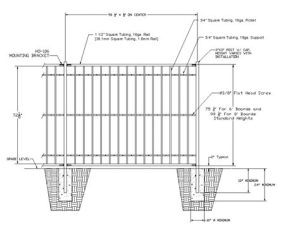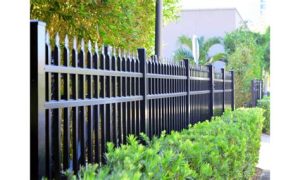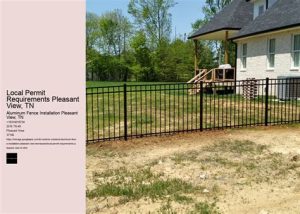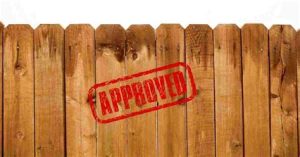Learn about local zoning laws, the fence permit application process, requirements, costs, and consequences of building without a permit in your area.When planning to install a privacy fence, it’s essential to consider whether you need a permit. While the idea of a cozy, enclosed space may seem straightforward, navigating the legal landscape can be complex. Local zoning laws vary widely, and understanding these regulations is crucial before breaking ground. In this blog post, we’ll delve into the specifics of the application process for a fence permit, the requirements and restrictions that may apply, and the costs you might incur. Additionally, we will highlight the potential consequences of constructing a fence without proper authorization. By the end of this guide, you’ll be equipped with the knowledge you need to make informed decisions about your fencing project and ensure that your boundaries are both beautiful and compliant.
Understanding Local Zoning Laws
When considering the installation of a privacy fence, it is crucial to first explore the local zoning laws that govern such structures. These laws can vary significantly from one municipality to another, influencing everything from fence height to placement on your property. Therefore, understanding these regulations is fundamental to ensuring compliance and avoiding potential issues.
Generally, zoning laws are established by local governments to regulate land use, including residential properties. They dictate where fences can be erected, how high they can be, and whether certain materials are permissible. Many areas require residents to adhere to specific boundaries—known as setbacks—which determine how far a fence must be from the property line. Violating these stipulations can lead to fines or mandates to remove the structure.
To navigate your local zoning laws effectively, it’s advisable to check with your city or county zoning office before proceeding with a fence installation. They can provide detailed information on the necessary permits, any restrictions that may apply, and guidance on how to avoid common pitfalls. This proactive approach not only ensures compliance but also promotes good relationships with neighbors and local authorities.
Application Process for Fence Permit
When it comes to installing a privacy fence, understanding the application process for a fence permit is crucial. Although the requirements may vary based on your local zoning laws, there are general steps that can guide you through the process.
- Research local zoning laws: Understand what regulations apply to your area. Visit your local planning department’s website or contact them for specifics.
- Gather necessary documents: You may need to provide a site plan showing the location of the fence, its height, and the materials to be used.
- Submit your application: Fill out the required forms and submit them along with the necessary documents and fees to your local authority.
- Await review: Your application will be reviewed for compliance with local regulations. This may take some time, depending on the workload of the office.
- Obtain your permit: Once approved, you will receive your permit. Ensure you keep this on-site during the construction of your fence.
It’s important to remember that application processes can differ significantly based on local ordinances. Therefore, always verify with your local authorities for the most accurate and tailored information.
In some areas, fencing permits may require public notification, meaning that neighbors might have an opportunity to voice concerns regarding your planned installation. Being informed about this aspect of the application process can save you time and potential disputes later on.
The key takeaway is to start early. The permit application process can sometimes take a while, and rushing to install your privacy fence without proper documentation can lead to complications down the line.
Permit Requirements and Restrictions
When planning to build a privacy fence, it is crucial to understand the permit requirements and restrictions that may apply in your area. In most localities, the installation of a privacy fence may necessitate obtaining a permit to ensure compliance with zoning laws and local ordinances. Therefore, it is essential to check with your local government or municipality before proceeding with construction.
Generally, the conditions surrounding permit requirements can vary significantly from one location to another.
- Height of the fence: Many jurisdictions have specific height limits for fences in residential areas.
- Location of the property line: Fences may need to be set back a certain distance from property lines or be built following specific setback rules.
- Material used: Certain materials might be favored or restricted for use based on neighborhood guidelines or environmental considerations.
Moreover, zoning laws might impose aesthetic restrictions, such as color coordination with existing structures or managing visibility for safety reasons. Non-compliance with these rules could lead to fines or the requirement to modify or remove the fence altogether. Therefore, it’s imperative to gather all necessary information and possibly consult with a local building department before starting your project.
Costs Associated with Fence Permits
When considering whether to install a privacy fence, one of the primary concerns homeowners often overlook is the costs associated with fence permits. Ensuring that you comply with local regulations can save you from hefty fines and additional expenses down the line. Understanding these costs can help streamline your planning process and keep your budget in check.
Generally, the costs for obtaining a fence permit can vary significantly depending on your location.
| Cost Item | Estimated Cost |
|---|---|
| Permit Application Fee | $50 – $200 |
| Survey Fee (if required) | $100 – $1,000 |
| Inspection Fee | $50 – $150 |
| Potential Variance Fee (if applicable) | $200 – $500 |
Additionally, it’s important to factor in the time and effort involved in the application process, as this can also have an indirect cost. Delays caused by insufficient paperwork or misunderstanding of local regulations may result in further expenses.
Consequences of Building Without a Permit
Building a privacy fence without securing the necessary permits can lead to a range of serious consequences. Homeowners often underestimate the importance of following local zoning laws, which can vary significantly by municipality. When you opt to construct a fence without the required permit, you may find yourself facing legal repercussions that can become quite costly.
One immediate consequence of building a fence without a permit is the risk of receiving a citation from your local government. This can result in fines that accumulate over time, leading to a financial burden that was easily avoidable. Additionally, local authorities may require you to dismantle the illegal structure, which not only incurs additional costs but also adds the stress of having to redo your home improvement project.
In some cases, if your fence violates local zoning regulations, it might be deemed a public nuisance. This can trigger complaints from neighbors, further complicating your situation. You may have to deal with community mediation or even legal action, all of which could have been avoided by obtaining the proper fence permits in advance. Therefore, it’s paramount to understand the implications of constructing your privacy fence outside the boundaries of local laws.
Frequently Asked Questions
What is the purpose of a privacy fence?
A privacy fence is designed to create a barrier that provides seclusion, enhances security, and reduces noise from surrounding areas.
Do all cities require permits for privacy fences?
Not all cities require permits for privacy fences; it varies by location. Homeowners should check local ordinances and building codes to ensure compliance.
What factors determine whether a permit is needed for a privacy fence?
Factors that determine the need for a permit typically include the height of the fence, the materials used, and the location of the property line.
What are the consequences of installing a privacy fence without a permit?
Consequences can include fines, having to remove the fence, and potential legal issues with neighbors or local authorities.
How can homeowners check if a permit is needed for their privacy fence?
Homeowners can check by contacting their local building department or zoning office, reviewing city ordinances, or consulting a professional contractor.
Are there specific height restrictions for privacy fences?
Yes, many municipalities impose height restrictions on fences, often capping them at six feet or seven feet for residential properties.
What common materials can be used for privacy fences?
Common materials for privacy fences include wood, vinyl, chain link with slats, composite materials, and metal, each offering different aesthetics and durability.





